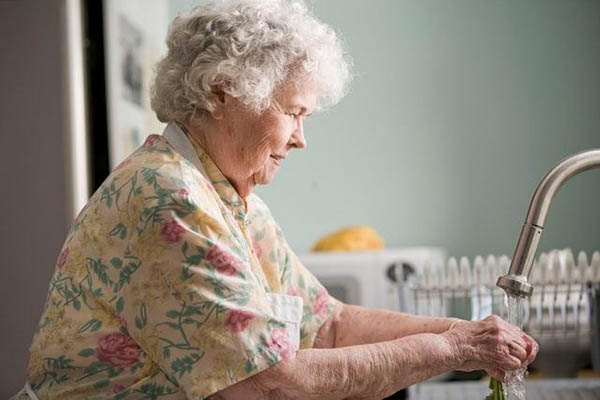
Aging in place is an important part of helping senior citizens maintain a sense of continuity and independence. However, doing so requires a balance of safety measures and best practices to protect them from adverse events that might otherwise derail this effort.
Family and friends play an important role in this process, as they can help with routine care and ensure that common hazards in the home are addressed to promote aging-in-place as an option.
Consider these top five effective tips to keeping seniors safe, healthy and happy at home:.
Remove Fall Hazards From The Home
Keeping the elderly from falling is one of the most important safety components for those aging in place. Fall hazards include lightweight furniture that topples easily, throw rugs, clutter, electrical cords, transitions between flooring types and poor lighting. For older people, a simple fall can turn into a health crisis.
A family member, friend, or occupational therapist should assess the home for anything that might pose a trip hazard and relocate or remove it.
Install an Emergency Response System
Whether it is a necklace with a button or a security system with an alert feature, seniors living at home should have some way to summon help if the need arises. There are numerous products on the market today that ensure seniors can get the help they need if there is a medical emergency.
See also this CDC Resource on Aging Preparedness “The Importance of Emergency Planning“
Learn who this applies to:
- The elderly who live in the local community.
- Those who live independently
- Those who only need partial assistance every day
- Seniors who do not seem vulnerable until an emergency
Coordinate In-Home Care
In-home care is a great way to sustain independent living as long as possible. Depending on the existing health of the senior in question, you might opt for non-skilled custodial/companion care or skilled nursing care. There are myriad options for in-home care that ensures a senior will get the help they need while maintaining as much independent as possible.
Increase Accessibility
Elements added to the home, such as grab bars in bathroom areas, wider door openings, and improved lighting help keep seniors safer by increasing accessibility. This not only promotes continued mobility and independence, but provides something of a safety net for seniors that may be having health-related issues that threaten their independence.
Do an assessment of the home to determine what might need to be added to promote this kind of accessibility.
Reconsider Elements Like Stairs
If the senior in question lives in a home with hazards, such as stairs or any other element that might cause them to fall, consider re-tooling the living environment to mitigate access. This might mean moving your loved one to a downstairs environment instead of an upstairs room that results in them navigating the stairs daily. Another option is to install a stairlift. This allows them to retain a sense of independence while ensuring that they are as safe as possible.
For more tips on how to keep older family members and friends at home as long as possible, reach out to Ted Gottlieb and Senior Learning Institute via our contact page.
